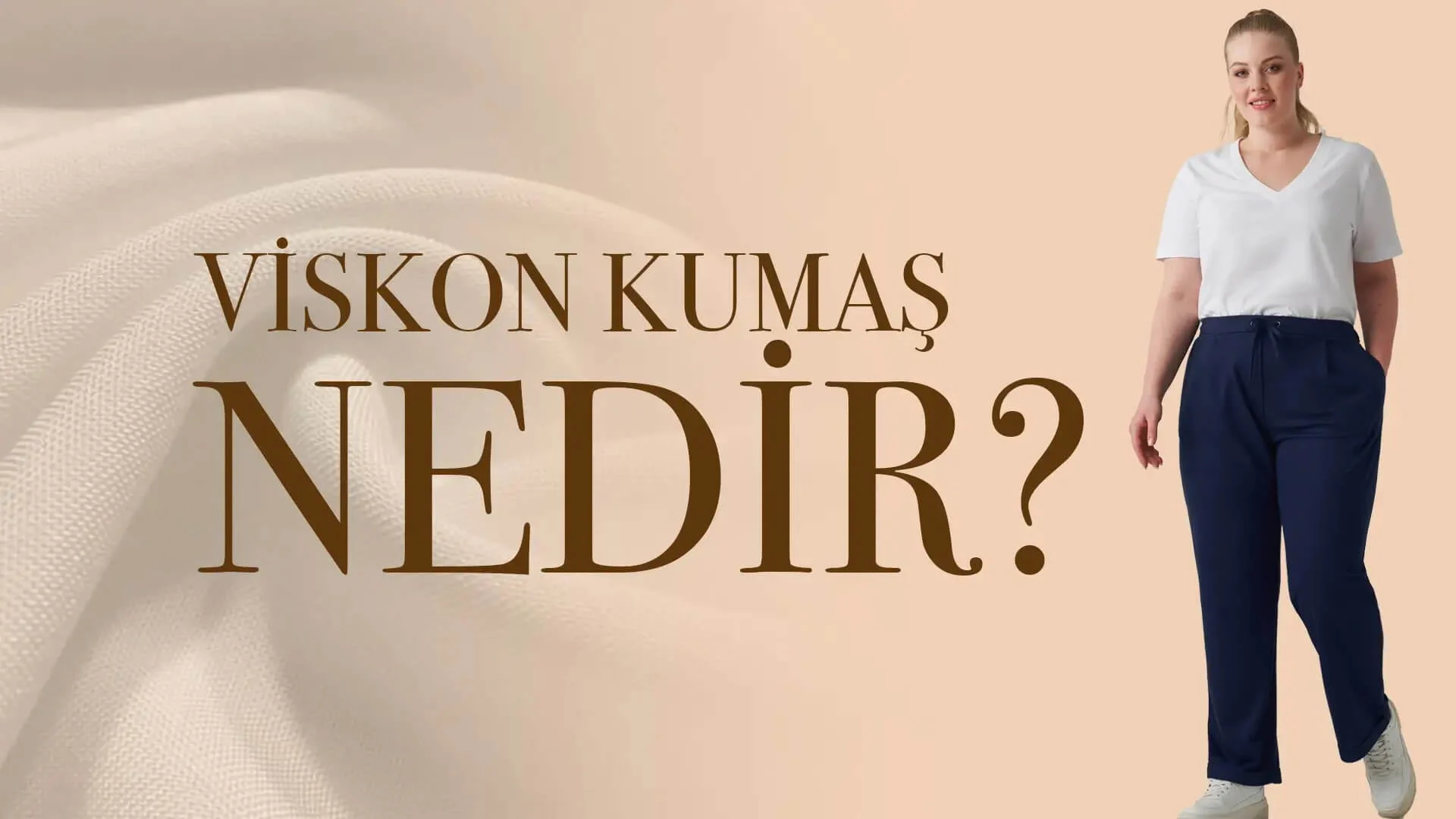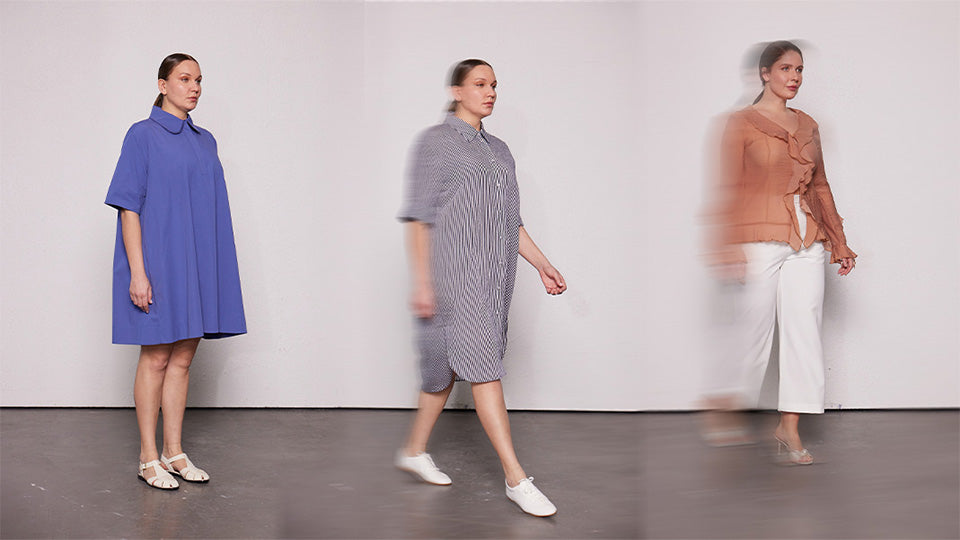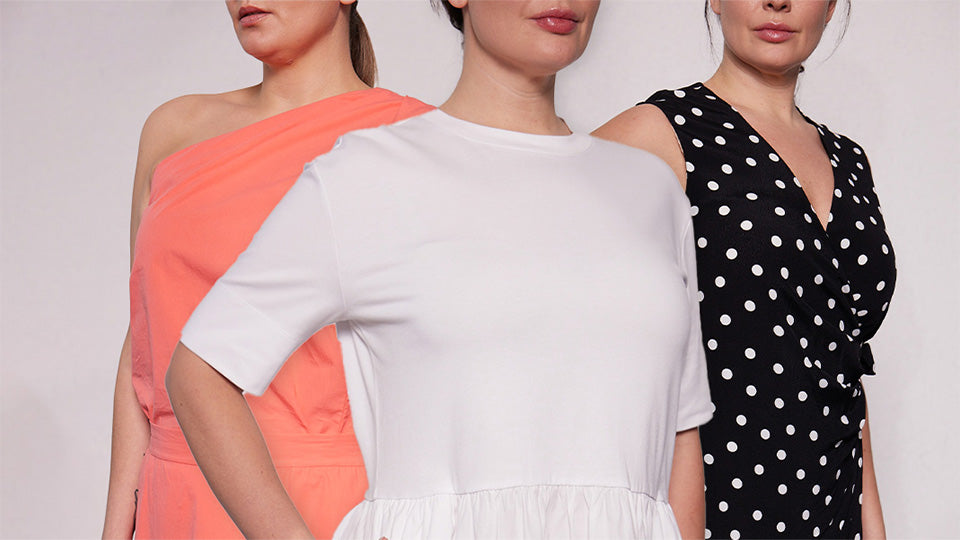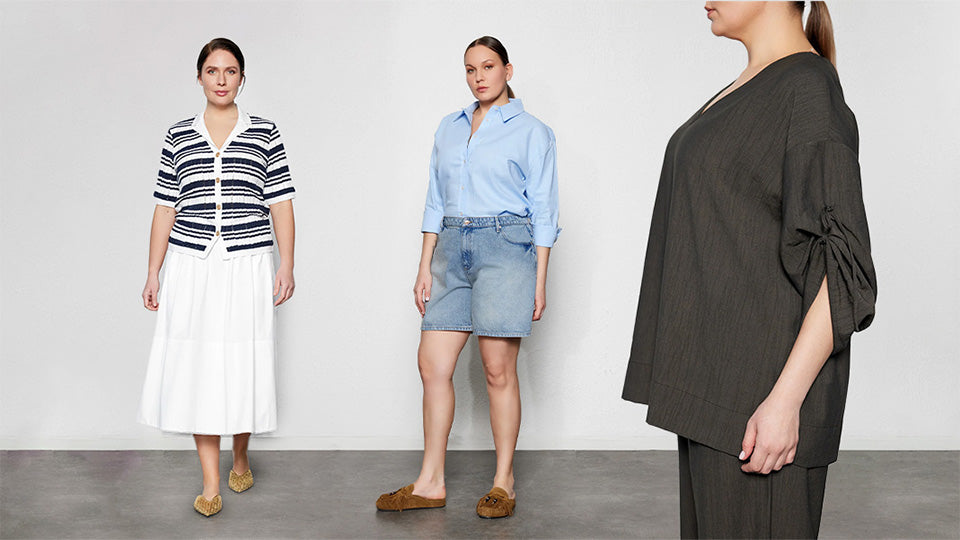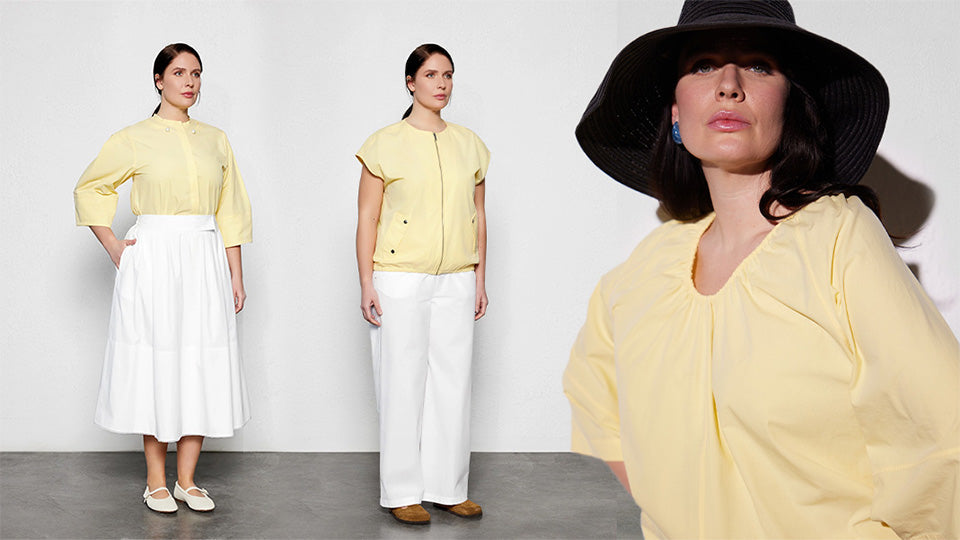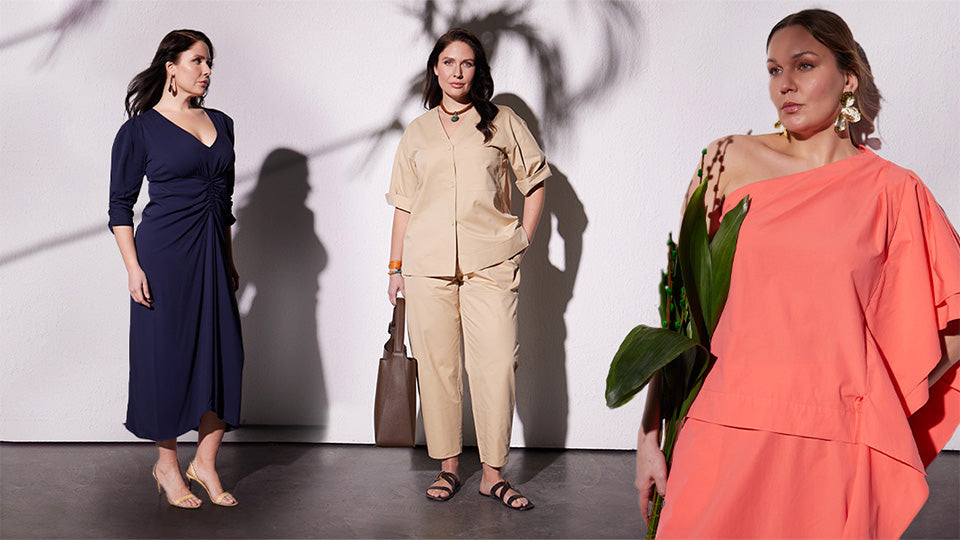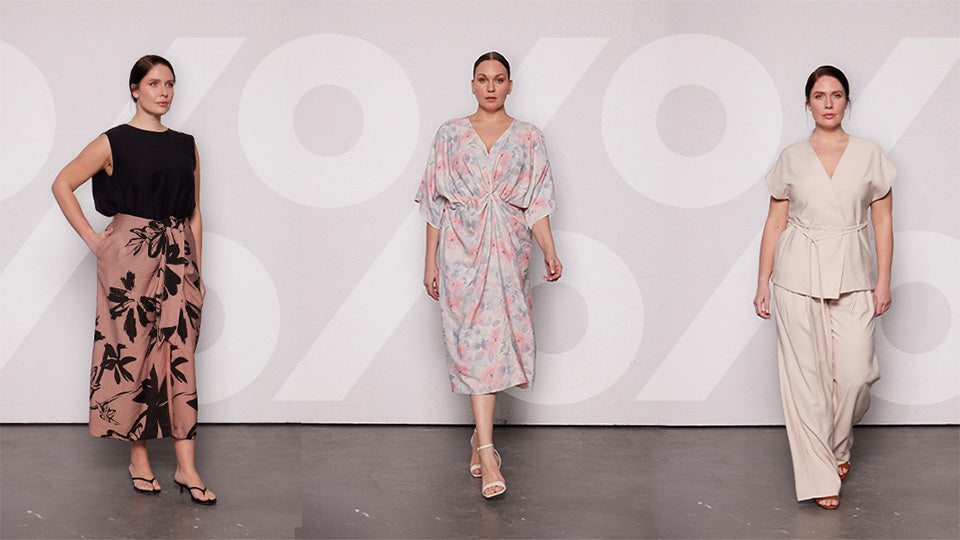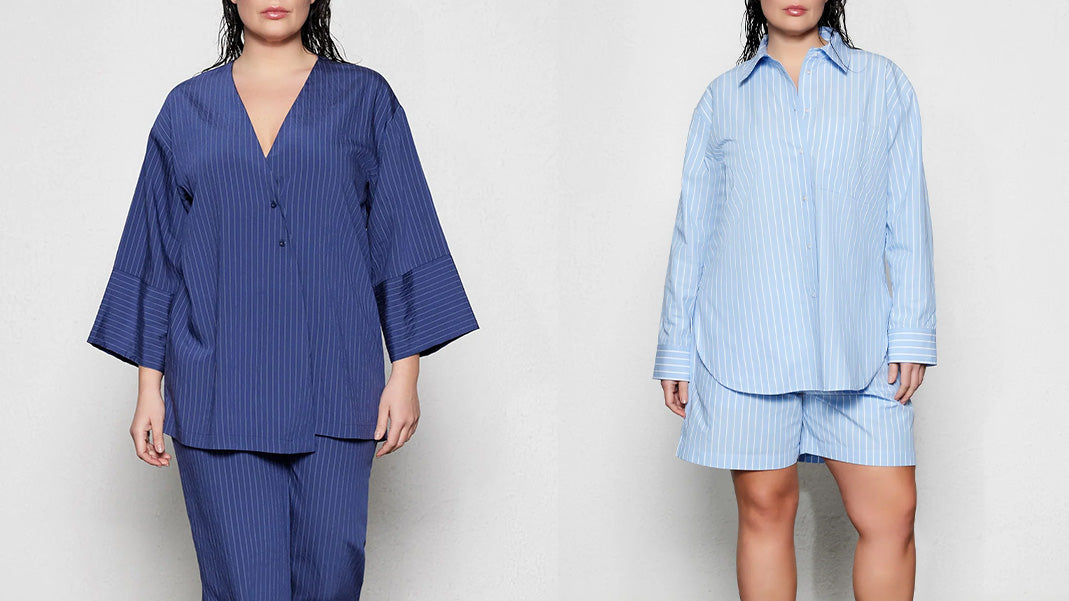Viscose fabric is a lightweight and breathable material that is frequently used in the fashion world. It is produced by blending plant-based fibers (viscose) with synthetic ones such as polyester. This combination gives the fabric a soft texture and a subtle sheen. With its moisture-absorbing property, viscose reduces sweating and offers a comfortable wearing experience—keeping you cool in summer and warm in winter, making it suitable for all seasons.
Viscose has a wide range of uses and is particularly common in everyday fashion and plus-size women’s clothing. It appears in garments like pants, shirts, sweaters, and dresses. Because it requires low maintenance, viscose is also a practical choice. For those seeking both elegance and comfort, viscose fabric is a must-have.

To complete your outfit, check out our dress category.
Characteristics of Viscose Fabric
As a semi-synthetic fabric, viscose offers several advantages for comfort and style. Here are its main characteristics:
- Soft: Becomes especially soft when blended with polyester.
- Stretchable: Offers flexibility and ease of movement.
- Shiny: Gains a shiny surface when blended with polyester.
- Heat-absorbent: Helps keep you cool in hot weather.
- Moisture-absorbing: Reduces sweating by absorbing moisture effectively.
- Fade-resistant: Doesn’t fade easily and is resistant to dirt, requiring minimal washing and ironing.
- Durable: Long-lasting and robust structure.
How to Care for Viscose Fabric
Just like choosing the right clothes, maintaining them is important to extend their lifespan. To keep your viscose garments in good shape, follow these tips:
- Machine Washing: Wash on low temperatures. Whites may fade if exposed to high heat, so separate colors and use cold water.
- Ironing: Viscose is sensitive to heat and may deform easily. Use a low heat setting and cover the fabric with a cloth while ironing.
- Dry Cleaning: It is dry-cleanable, but repeated dry cleaning may affect its softness and sheen.
- Storage: Store in a well-ventilated, dry place. Keep garments hanging to avoid wrinkles and maintain breathability.

Which Products Use Viscose Fabric?
Viscose is highly versatile and used in many fashion items, including accessories. Common products made from viscose include:
- Dresses and relaxed-fit plus-size shirts
- Pants and skirts
- Shorts and sweatpants
- Cardigans and chest belts
- Woolen hats and beanies
Frequently Asked Questions About Viscose Fabric
Is Viscose Suitable for Summer or Winter?
Viscose is suitable for both. Its moisture-absorbing and cooling properties make it great for summer, while its heat-retaining ability also keeps you warm in winter. The fine fibers trap warmth by limiting airflow, making viscose a year-round fabric.
Does Viscose Fabric Pill Easily?
Yes, viscose has a tendency to pill due to its fine surface fibers. These fibers provide softness but also make the fabric prone to pilling when rubbed. However, this texture also helps with moisture absorption, keeping you cool.

If pilling becomes an issue, wash the fabric inside out or use anti-pilling sprays.
Does Viscose Shrink After Washing?
Viscose can shrink after washing due to its moisture-absorbing nature. To prevent this, avoid washing it at high temperatures and do not tumble dry. Instead, air-dry at low temperatures to maintain shape and size.
Is Viscose a Healthy Fabric?
Yes, viscose is considered skin-friendly for several reasons:
- Lightweight, soft, and stretchy—comfortable for daily wear.
- Moisture-wicking—helps reduce sweating and keeps you cool.
- Breathable—allows skin to breathe, improving skin health.
- Often blended with cotton or spandex—low risk of allergic reactions.
Is Viscose the Same as Nylon?
No, viscose is a natural-based fabric, often made from cotton, silk, or linen fibers. It’s soft, lightweight, and breathable.
Nylon, by contrast, is a synthetic polymer. It is non-breathable, water-resistant, and less suitable for comfort in daily wear. Viscose and nylon differ significantly and should not be confused.
Does Viscose Fabric Require Ironing?
Viscose usually requires low maintenance but tends to wrinkle. Ironing on low heat and from the reverse side helps prevent damage or shine. Steam ironing is also a good option for wrinkle removal.
Why Should I Choose Viscose Fabric?
Viscose offers excellent elasticity, breathability, and moisture control. Lycra-blended versions stretch more and hold shape better than cotton blends. Its shape-retaining properties after ironing and year-round suitability make it a versatile choice. Explore Luokk’s wide selection of elegant, quality pieces made from viscose for all seasons.

